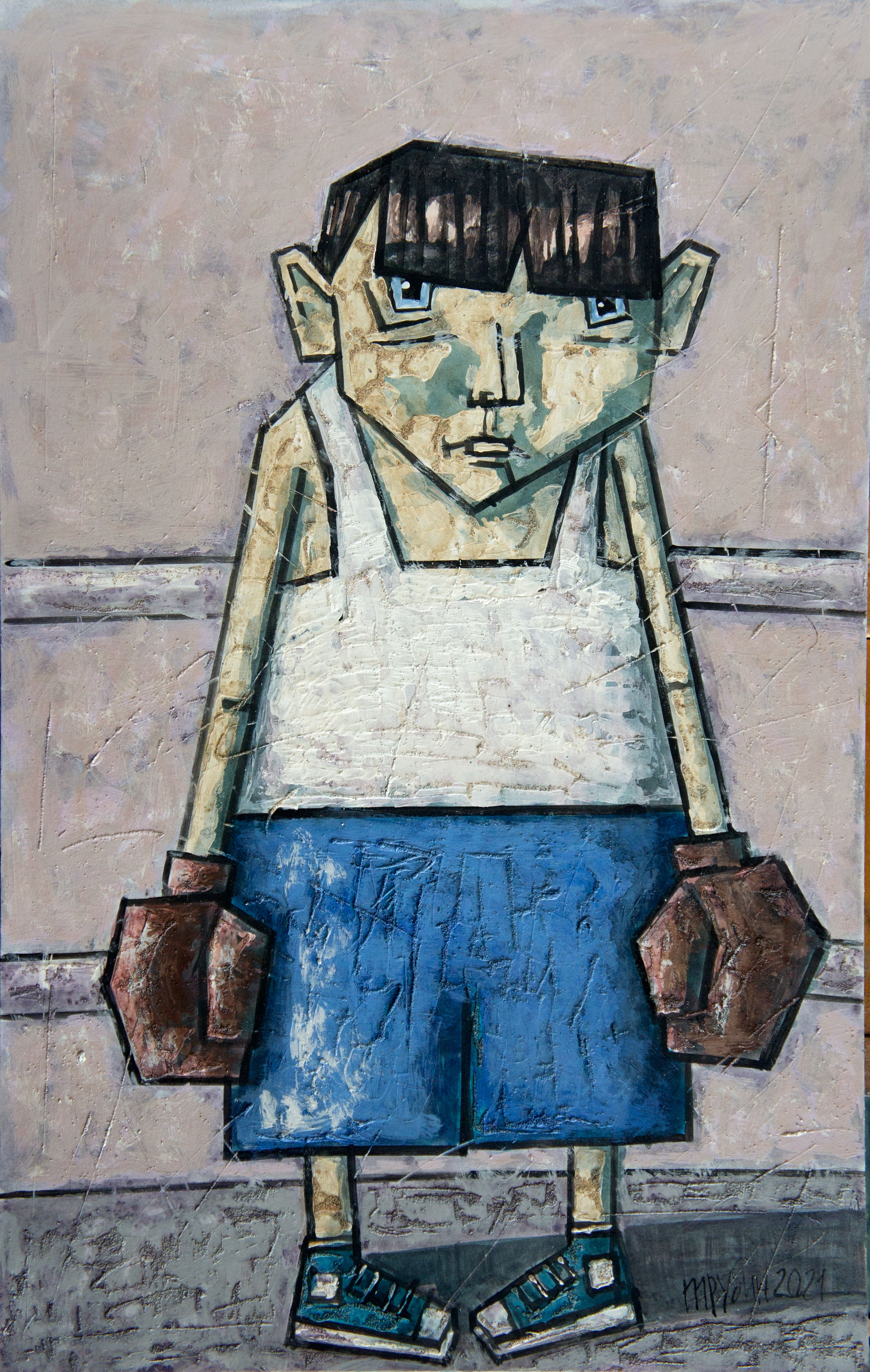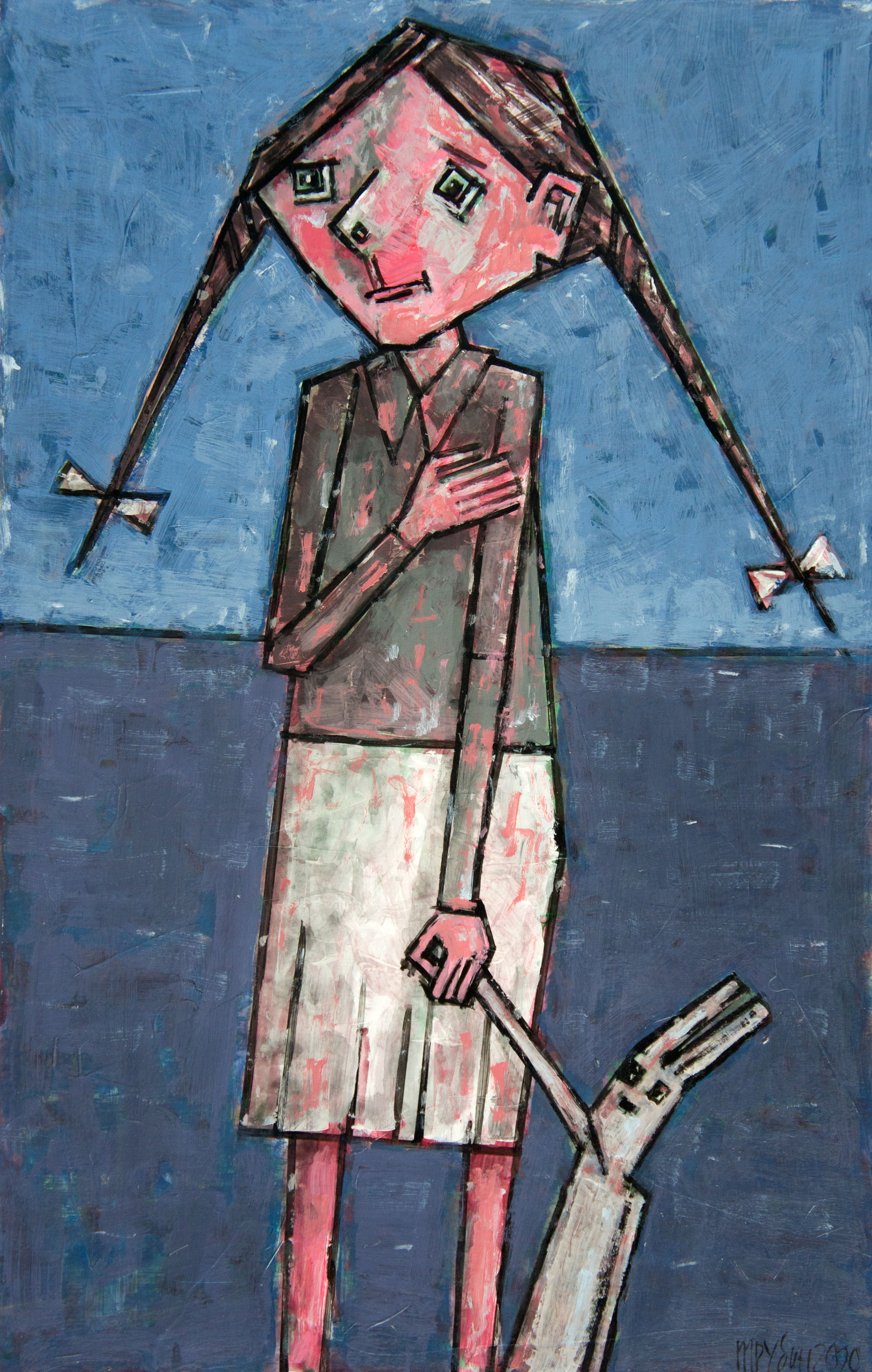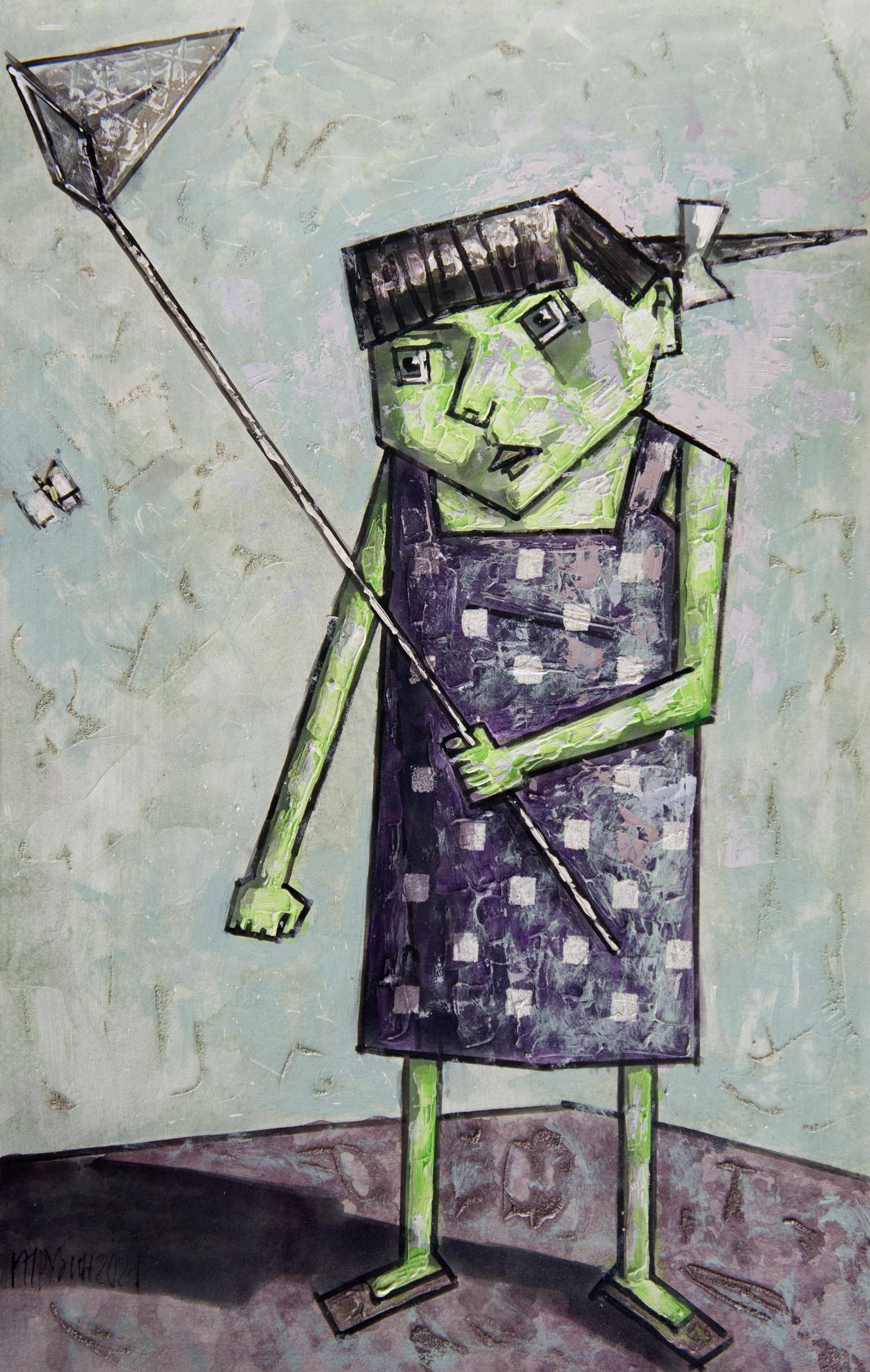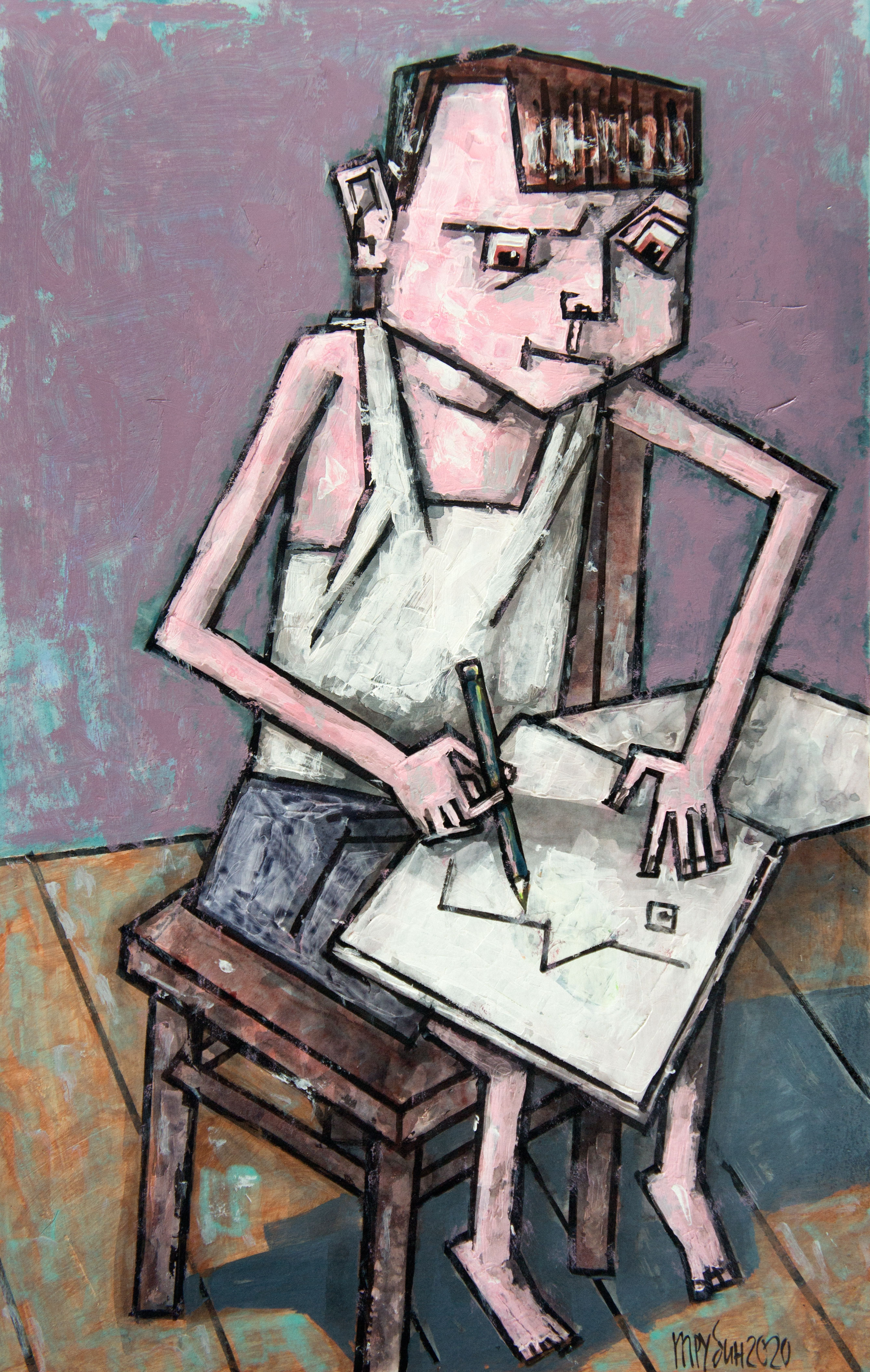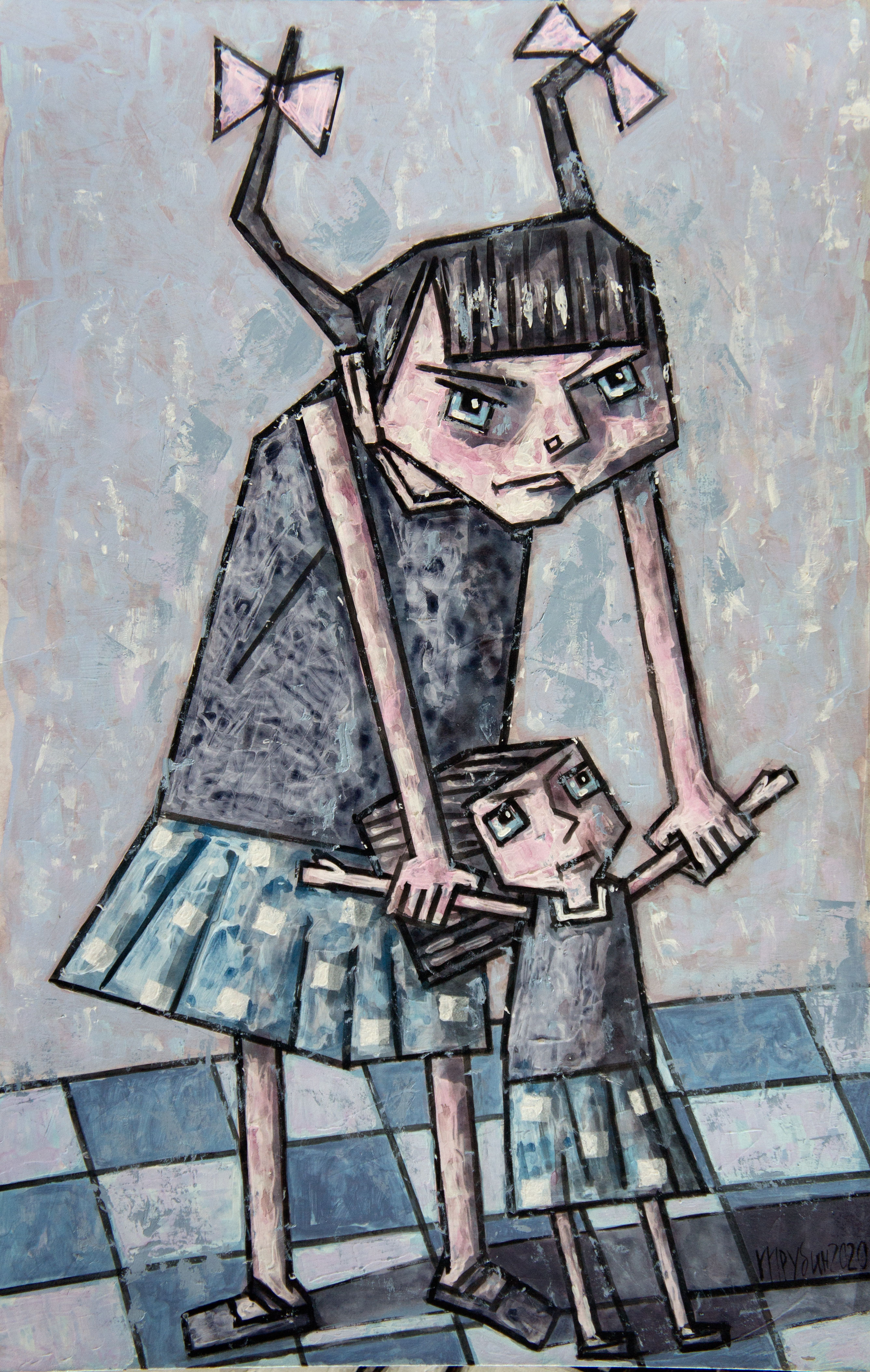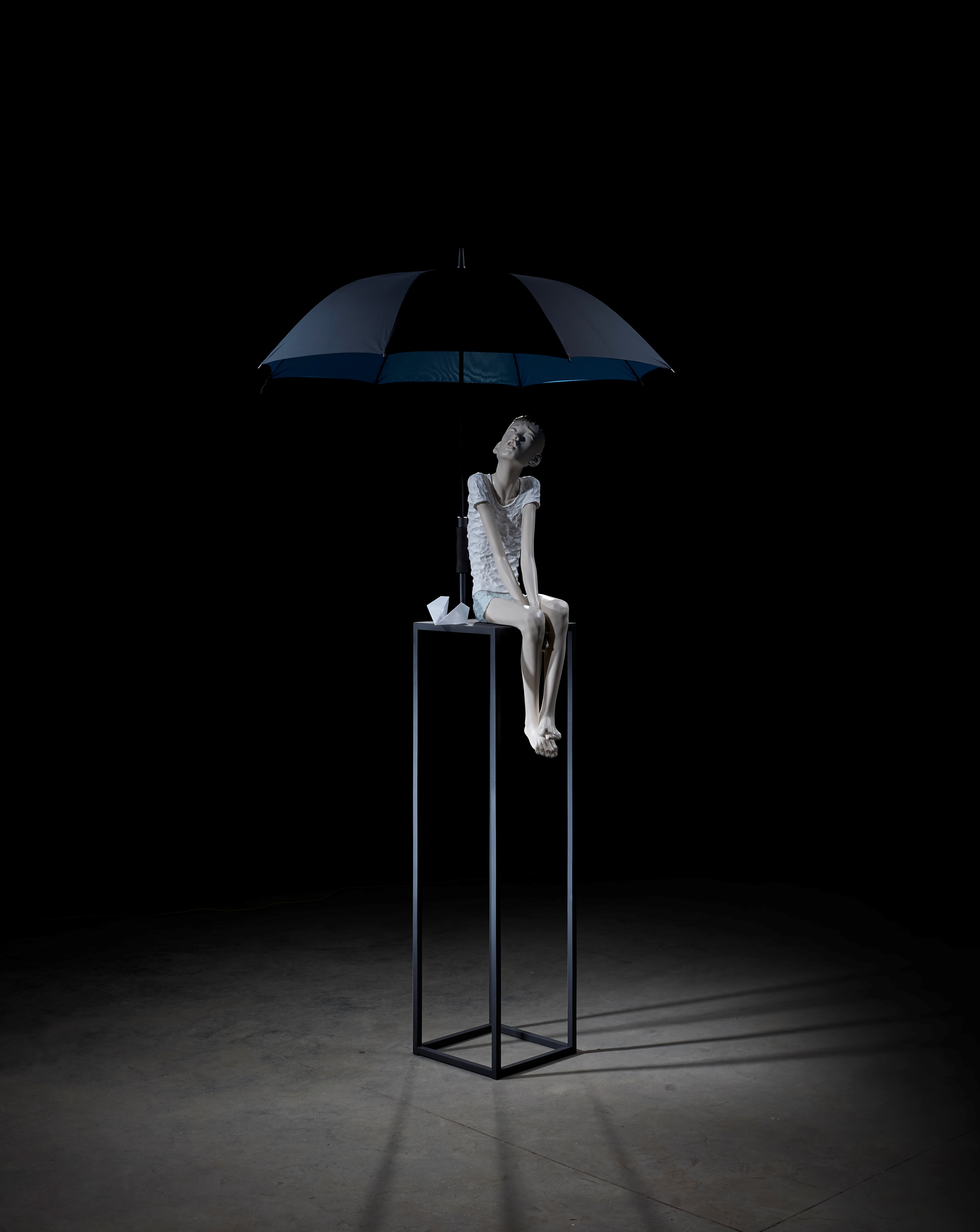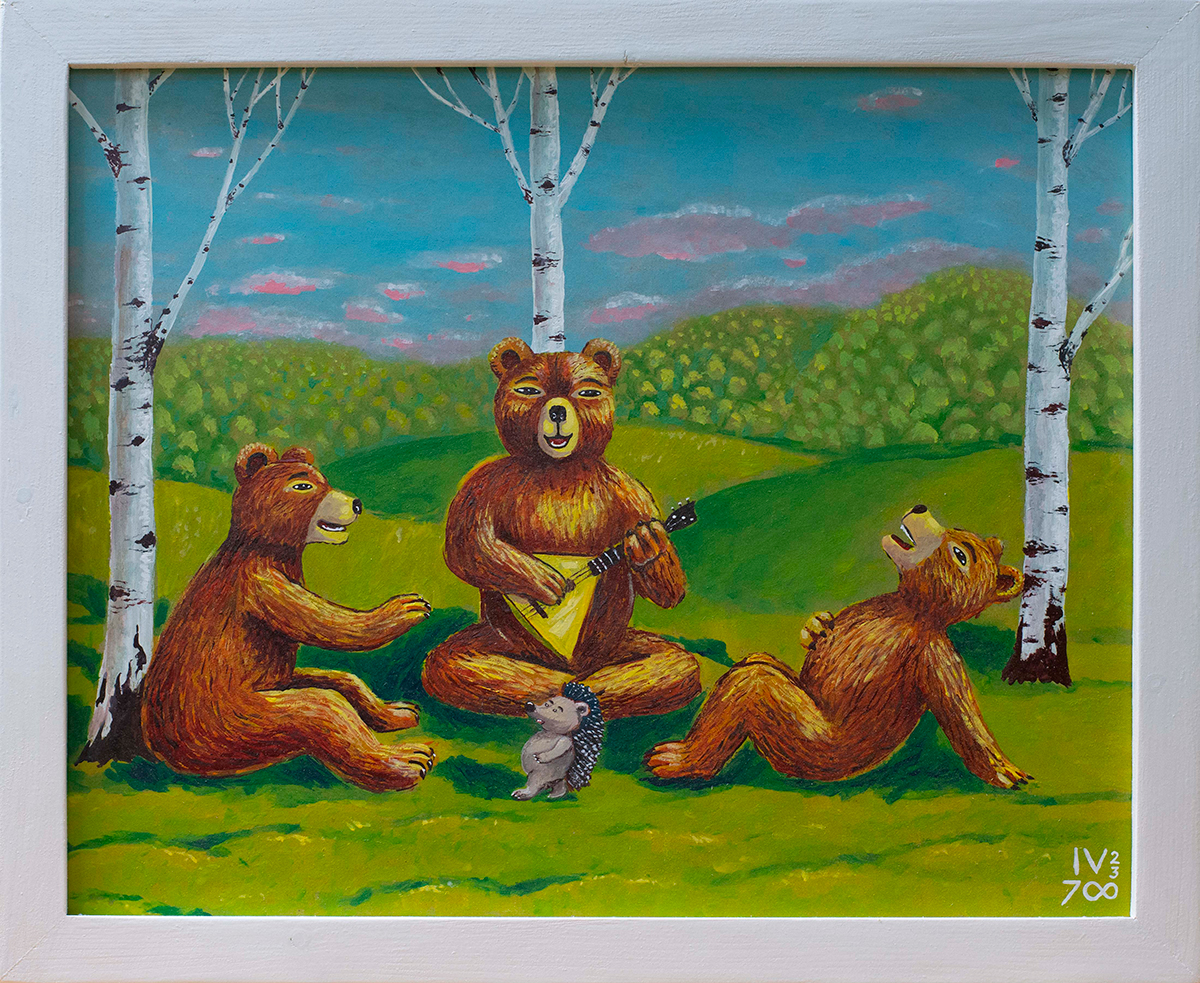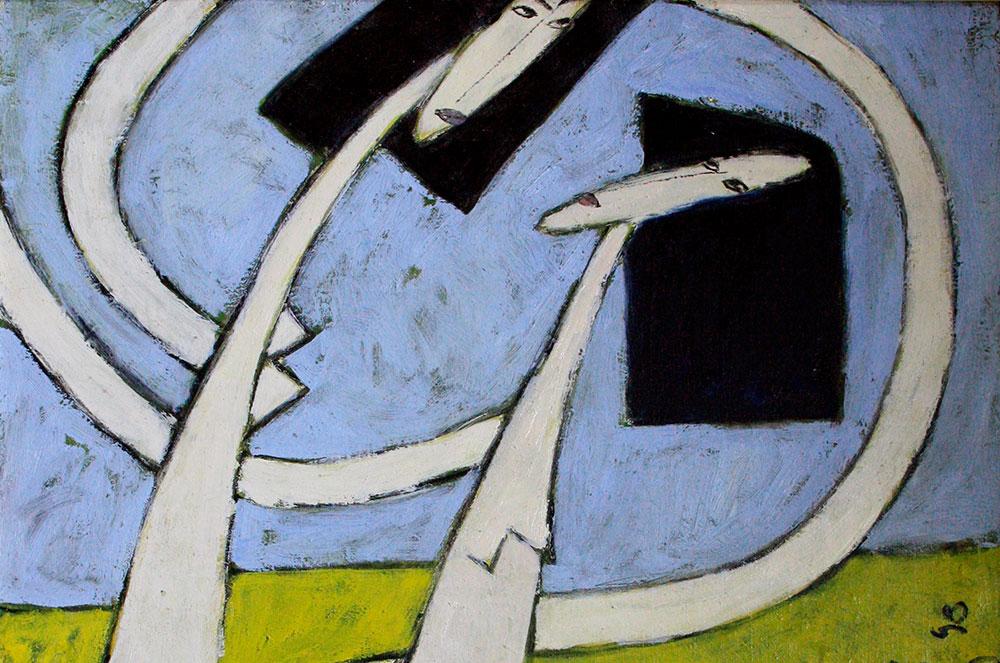Erarta Museum of Contemporary Art presented an exhibition by Dmitry Trubin whose characters summon nostalgic recollections and bring back long-forgotten childhood memories
-
Images of two dozen widely different boys and girls inviting comparisons to our younger selves
-
An exhibition resembling a visual psychological test
-
A series of works in which their creator ‘geometrises the world by using the straight line’ in the manner of kids’ drawings
A continuation of the drawing hand, the line is always peculiar to the artist – just like the handwriting style shaped by an individual’s personality. The same holds true for Dmitry Trubin. His spunky and in every sense straightforward manner was definitely informed by the places where he was born and raised and lives to this day. Despite the harsh climate of the Arkhangelsk Oblast, the artist is fond of long walks along the Northern Dvina: to the accompaniment of the piercing winds blowing from the White Sea, he searches both for inspiration and for materials to use in his art objects, like tree branches, stones, and bogwood. Characteristically, his paintings are generally built around broken outlines. ‘I geometrise the world by using the straight line which I see as a purely human-made phenomenon since there are no such lines in nature,’ declares Trubin. ‘The straight line embodies the absolute, hence is divine. That’s why I go for the straight line!’
The Little Adults exhibition is a showcase of Trubin’s recent Children’s Games series. Here, the artist’s distinct broken line evokes kids’ drawings, further accentuating the naive childishness of his characters. Both the protagonists and their stories summon nostalgic recollections: looking at these pictures, one is bound to experience flashbacks, perhaps remembering the smell of the first school satchel or the springy feel of the bright rubber ball used in the game of dodgeball.
Needless to say, a game is not only a fun pastime, but a learning and development experience helping the child to acquire new skills by imitating adult behaviour. For instance, all characters in the Doll Play cycle behave differently: the artist seems to emphasise the disparateness of their personalities and predict what they will be like and how they will interact with others when they grow up. It is not by chance that the dolls the girls are holding look like their own small replicas, mimicking the way our children mirror us. As for the boys, they are much simpler in Trubin’s rendering: broad-faced and square-eyed, they appear to be free of any deep-seated anxieties. Ultimately, the exhibition is akin to a visual psychological test: investing his ‘little adults’ with widely diverse temperaments, their creator seems to offer us a chance to select a character that most closely resembles us or our kids. Incidentally, one of the artworks featured in the show is a self-portrait: the Drawing Boy represents the artist’s idea of what he was like in his youth.
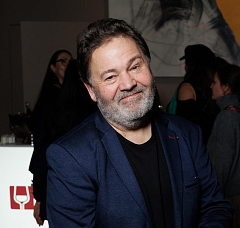
Holder of the honorary title of Distinguished Artist of the Russian Federation, Dmitry Trubin was born in 1961 in Kotlas, Arkhangelsk Oblast. In 1989, he graduated from the Fine Art School of the Moscow Polygraphic Institute. The artist currently lives and works in Arkhangelsk. A painter and sculptor, Dmitry Trubin has also illustrated more than 200 children’s books. In 1996, he received a special recognition from the International Board on Books for Young People (IBBY) judging the Hans Christian Andersen Awards, landing on the biennial IBBY Honour List. The artist’s works are in the collections of the Pushkin State Museum of Fine Arts and the Museum of the Russian Academy of Arts in Moscow and the Arkhangelsk Museum of Fine Arts.

